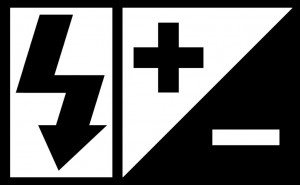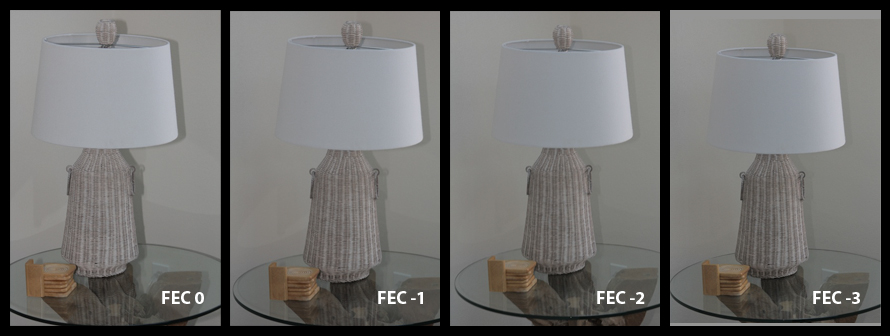 As I discussed in my previous post in this introductory flash series (http://www.infotor.com/blog/e-ttl-i-ttl-automatic-flash-modes/), shooting in TTL flash mode, the "auto" flash mode, is very handy, especially, when you are moving around and the flash-to-subject distance is constantly changing. TTL on all newer camera and flash systems is very good, but it's not without problems. Sometimes TTL calculations made by your camera and flash don't result in an image that you like! Normally, if you need the scene to be, say, a bit brighter, you would open your aperture up a stop or so, but as you do that, the TTL system will notice it and recalculate the flash power based on this more open aperture. No. What you want to do is override the TTL’s calculations to compensate for an overly bright exposure. This is where Flash Exposure Compensation (FEC) comes in.
Don’t confuse this with regular Exposure Compensation (EC) on your camera. EC is used to override exposures without flash, mostly in Aperture Priority mode or Shutter Priority mode. Flash Exposure Compensation is similar in that you can’t manually change the flash power when working in TTL Mode, but you can basically tell the flash to reduce its power output by selecting an FEC setting of -1 to -3 stop. And, conversely, you can increase flash power by selecting an FEC setting of +1 to +3.
As I discussed in my previous post in this introductory flash series (http://www.infotor.com/blog/e-ttl-i-ttl-automatic-flash-modes/), shooting in TTL flash mode, the "auto" flash mode, is very handy, especially, when you are moving around and the flash-to-subject distance is constantly changing. TTL on all newer camera and flash systems is very good, but it's not without problems. Sometimes TTL calculations made by your camera and flash don't result in an image that you like! Normally, if you need the scene to be, say, a bit brighter, you would open your aperture up a stop or so, but as you do that, the TTL system will notice it and recalculate the flash power based on this more open aperture. No. What you want to do is override the TTL’s calculations to compensate for an overly bright exposure. This is where Flash Exposure Compensation (FEC) comes in.
Don’t confuse this with regular Exposure Compensation (EC) on your camera. EC is used to override exposures without flash, mostly in Aperture Priority mode or Shutter Priority mode. Flash Exposure Compensation is similar in that you can’t manually change the flash power when working in TTL Mode, but you can basically tell the flash to reduce its power output by selecting an FEC setting of -1 to -3 stop. And, conversely, you can increase flash power by selecting an FEC setting of +1 to +3.
This is magical and gives you the freedom to rely on TTL for your on-the-go shooting situations with the knowledge that you can still step in and override what TTL thinks is correct if the results don’t match your vision for the shot. Remember, TTL works by sending out a pre-flash signal to give the flash an idea of the distance from camera/flash to subject so it can calculate an appropriate power output for the flash to send out for the actual image capture. If the flash misses what you intend to be the subject and calculates based on the wrong distance, the resulting image may be over- or under-exposed in your opinion. That's when you turn to FEC and -if over-exposed, i.e., too bright, you set FEC to a -1 for starters. Take a shot, look at results. Good? Bad? Make a change and take another shot.
Sometimes applying a Flash Exposure Compensation can be dramatic and sometimes very subtle. In the four images of the lamp, the one on the far left was without any compensation. If you click on the image and display it full size, you can see some shadows on the white wall behind the lamp. As I underexposed the image by a negative stop (setting FEC to -1, then -2, etc.), you notice that the shadows are less visible and the contrast in the image of the lamp increases. Subtle.
 In the shots of the candle holder outside, on the other hand, the straight shot at ISO 400, shutter speed 1/60, and at f/8 with flash set to E-TTL (Canon), was a bit too bright. Again, click on the image to see a larger version. Setting FEC to a -1 stop (underexposure by reducing flash power a stop) added some contrast and improved the shot some. However, personally, I prefer the third shot because of its contrast and, in fact, kind of like the fourth image as well that was shot 3 stops underexposed (i.e., FEC -3). A bit more dramatic than the changes seen in shots of the lamp. What do you think?
In the shots of the candle holder outside, on the other hand, the straight shot at ISO 400, shutter speed 1/60, and at f/8 with flash set to E-TTL (Canon), was a bit too bright. Again, click on the image to see a larger version. Setting FEC to a -1 stop (underexposure by reducing flash power a stop) added some contrast and improved the shot some. However, personally, I prefer the third shot because of its contrast and, in fact, kind of like the fourth image as well that was shot 3 stops underexposed (i.e., FEC -3). A bit more dramatic than the changes seen in shots of the lamp. What do you think?
On Canon cameras Exposure Compensation settings (+/- 1-3) affect only regular camera exposures, i.e., non-flash exposures and Flash Exposure Compensation settings affect only flash exposures. This total separation of these two very useful controls is handy, however, not all cameras handle EC in this way (Nikon, for example). On these other camera brands, if you have EC set to some value other than "0," that will affect your resulting image exposed using flash! This is important to realize as you take into account that when shooting with flash, you are actually creating two separate images in one (http://www.infotor.com/blog/flash-friday-shooting-with-flash-is-like-taking-two-pictures/).
As you begin to use flash more and more, you will find that having full stop settings committed to memory can be very useful and speed up your decision making as you run through test shots (http://www.infotor.com/blog/flash-friday-know-your-full-stops-for-aperture-shutter-speed-iso-and-flash-power/). You see that when discussing FEC and EC the settings such as an EC of -2 or an FEC setting of +1 refers to full stops.
In addition to teaching scheduled photography classes throughout the year, I am also available to do one-on-one tutoring or small group lessons designed to meet YOUR needs and what you want to learn in the area of photography, using flashes, or the use of Apple products and software. Give yourself the gift of learning: http://www.infotor.com/photoclasses! Check out my new special tutoring bundle: http://www.infotor.com/photoclasses/tutoringbundle.php!
